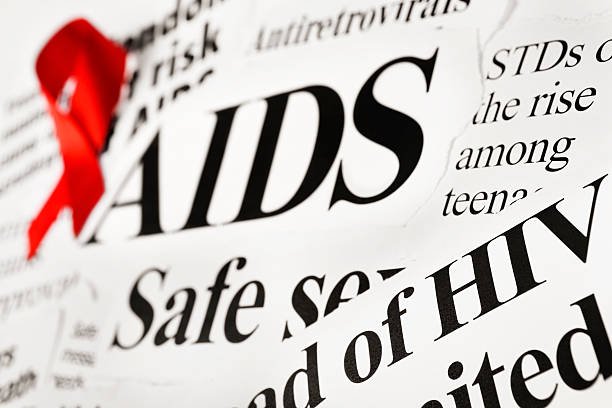A keynote on the AIDS epidemic story
By Arshan Khatri There have been many plagues and Pandemics before, affecting people in negative ways. The AIDS Epidemic was an unexpected one, putting the victims at high risk of Immune deficiencies and breaking them down mentally. The Acquired Immune Deficiency Syndrome (AIDS) disease is caused by the HIV viruses, a group of very latent viruses, which makes them more so threatening. AIDS was not just a medical challenge but also a political one. The early 1980s shook the world with the unfolding of one of the most fatal diseases killing around 690,000 humans in 2020. The Good News is that the statistics are decreasing with the advent of modern- day technology, awareness, and prevention efforts.
The AIDS Epidemic was a huge challenge to the Healthcare systems around the world. This disease most likely originated from Western Africa and seemed to have transferred from non- human primates to human beings. This virus then traveled across the world when Africa was colonized and when the sex trade began. It reached United Status; California and New York were its primary targets.
Let’s take a look at the origin of the AIDS Epidemic: The central point of discussion when it comes to HIV in Africa, particularly Western Africa. In Africa, the primates had SIV (Simian Immunodeficiency Virus) strain from the Genus Lentivirus, which seemed to live in harmony with their primate hosts. The main concern is it’s the crossover to the Human; there were many theories proposed as to how did that occur. The most prevalent theory is the ‘Bushmeat Trade’, which involved the hunting of animals especially primates for food and other purposes. The hunters were regularly subjected to the animal’s blood and any cuts or injuries in the hunter’s body led to the mixing of their blood and subsequently the Crossover event occurred. However, the notion that the primates were unaffected by the SIV strain they carried, is challenged today. Most likely, this crossover event took place in the 1930s. In a nutshell, the transfer of these SIV strains from various primates like Chimpanzees and monkeys was the root of a tragic epidemic that would horrify the people of the world after a few decades.
It started among gay men in LA and San Francisco. The symptoms were that of Pneumocystis Pneumonia (PCP) and a cancer type called Kaposi Sarcoma was also diagnosed. Not only gay men but people who used intravenous drugs were also vulnerable to catching HIV. At first, the CDC or the Center for Disease Control and prevention couldn’t understand much and they needed funding from the government to do research; they were made fun of in the press for reporting an epidemic that was prevalent amongst gay men. It was too late; People were dying in big numbers.
The government was too late to help. After the president approved the funds, the research began nationwide, collecting data. Drugs were proposed like the AZT. Clinical trials were conducted to check the usability of these drugs but the people were inpatients. They pledged against the NIH and formed support groups like ACT UP owing to the disconnect between the scientific community and the regular people.
As the studies occurred, the understanding of AIDS cleared more and more. In the beginning, AIDS was the subject of stigmatization and mockery by regular people. AIDS patients like 13- year-old Ryan White were not allowed to attend public places and refrained to attend schools. Soon though this changed, people began to mature and understand the scale and threat of this global Epidemic.
Talking about treatments-many treatments like HAART, Stem Cell Transplant and Bone Marrow Transplant are being practiced. There are constant efforts made to educate people about
precautions, treatments, sexual behaviour, and more to undo the errors of the past. Unfortunately, the deaths that happened due to the carelessness of government officials, people, and healthcare workers couldn’t be undone. Slowly but surely, the future is looking promising for AIDS considering the breakthroughs in health care systems, public support, and governmental aid. We can only get better at it if only the patients, doctors, people, and government work together in harmony.
References
hiv.gov Global statistics 2020
Morbidity & Mortality Weekly Report. Kaposi's sarcoma and pneumocystis pneumonia
among homosexual men - New York City and California. MMWR Weekly 1981. 30:
305–308.
Center for Disease Control (CDC) (1981) 'Kaposi's Sarcoma and Pneumocystis
Pneumonia among Homosexual Men- New York City and California' MMWR
Morbidity and Mortality Weekly Report 30(25):305-308.
A history of AIDS: Looking back to see ahead. Eur. J. Immunol. 2007. 37: S94–102
Ryan White: My own story. Biography (1991)
AIDS Epidemic—Origin, mechanism, stigmas, American struggles, mental issues and
cure, Curieux Academic Journal, May 2022 issue PG no. 43-57 by Arshan Khatri.

